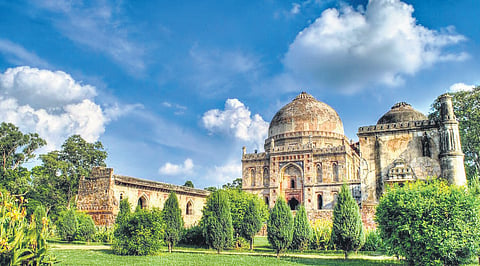The bundled joys of picnic days
When was the last time that you were part of a picnic?” I asked my husband a few weeks ago. “Well… I don’t remember the year, but I do remember that I was under ten, and that we’d packed loads of absolutely delightful food to a remote patch some 30 kilometres away from home,” he replied. This got us thinking, taking us back to last Saturday, when my friends and I headed to the delightful Lodhi Gardens, amid this cold wave of Delhi, armed with baskets of food and juices just the way we once used to.
As middle-class Indians, the very idea of a picnic was integral to our childhoods. Most of our homes were devoid of large-enough front-yards or back-yards to accommodate outdoor parties, and barbecues were never a trend here. Therefore, through the ’80s, ’90s and the early part of the 2000s, families and groups would get together in public gardens, parks and riversides, armed with home-cooked delicacies and all the requisites for a variety of indoor and outdoor sports.
Last Saturday, my friends and I—six of us, no less—replicated this essence at the delightful Lodhi Gardens. On the menu were aloo subzi sandwiches, chicken and mayonnaise sandwiches, matar kachoris, pickles, sponge cakes, oranges and juices. Our parents may have chuckled looking at our brief menu, but for the typically urban, sheltered young adults that we are, this was a resplendent experience!
As a kid, my picnics with my parents would involve getting to meet family friends, while my mother would cook our favourite dishes. My husband, too, reminisces on how picnics during his childhood would include two massive backpacks that were filled with snacks, appetizers, lunch and even dessert. “That’s not all—on many occasions, we would even carry along portable gas or coal stoves, where marinated meat, the focal point of most Bengali picnics, would be cooked after we’d reached the picnic. Not only were we eating out in the open—much of the fun was centered around savouring the entire experience of being outside,” he said.
In my childhood, growing up in a Dehradun that was quaint, sleepy and immensely peaceful, weekend picnics in the winter months would, without fail, include aloo puri, accompanied by dollops of dry mango pickles. More elaborate picnics, which would spread out over the afternoon, would include pulao and chhole as well. For kids, cucumber-tomato sandwiches lathered with butter were the usual order, and would be followed by sponge cake slices. There would also be one party that would bring along homemade wafers, while we’d also pack with us large flasks of tea for the elders and paper packets of Mango Frooti for us.
If you grew up in ’90s India aspiring towards urban living, it’s unlikely that you’d have missed this experience—no matter which part of the nation you were in. Yet, as our livelihoods became more urban, such concepts of community experiences have dwindled. We have, over time, swapped out such nature-driven experiences in favour of binge-stream house parties, games of laser tag in malls, and so on.
It is this that reminded me of the importance of outdoor experiences in the modern world. You see, our lives today have a steady monotony, despite the myriad entertainment experiences that Delhi has to offer. What we, in turn, forget is that through its ample presence of greeneries, Delhi also offers many places that would serve as great picnic locations.
These destinations offer great warmth in the winter months, giving us outdoor experiences without even truly stepping out from our comfort zones. Most picnic destinations are also pet-friendly, which gives us a truly inclusive entertainment experience that wouldn’t need you to leave your pup behind as you go out.
Picnics, therefore, remain a rarity in our modern-day life-scape. But, there’s no reason why you wouldn’t wish to savour picnics more. After all, picnics are best experienced in the four months between November and February—when Delhi’s mesmerizing winters leave you with yearning for warm, fuzzy feels. It also reacquaints you with nature, and even leads to experiences that make you interact more with people you may have never known otherwise.
I, for instance, stumbled upon a note left behind by someone, which had a funny caricature placed above the words, “I hope this cheers you up, dear stranger.” Make no mistake, it truly did.

